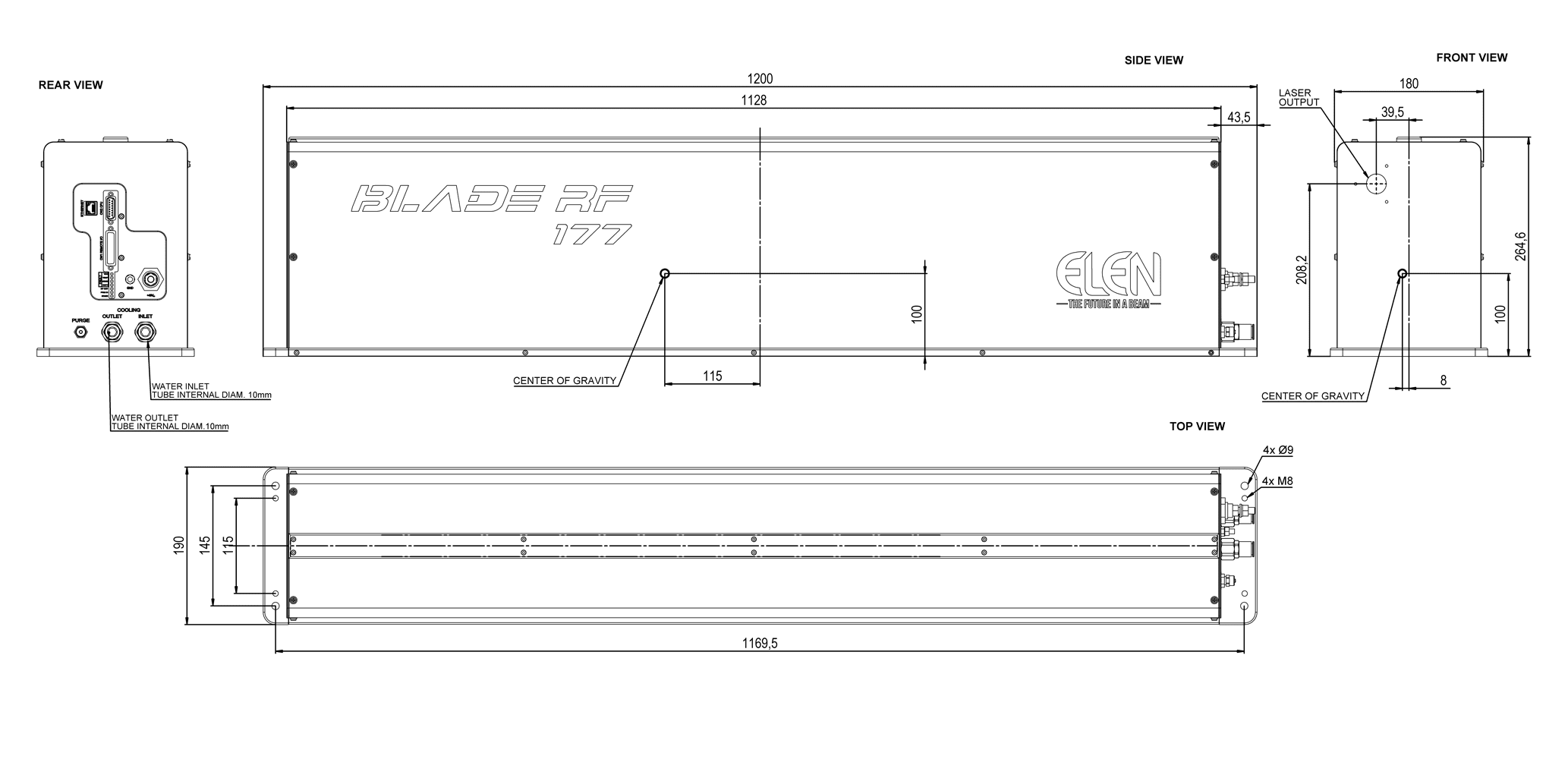Blade RF 177 G

Rated power (W)
150
Wavelength (μm)
9.3 ± 0.2
Low Power RF Sealed Off Pulsed Laser, high peak power and wide range of wavelengths
Low Power RF Sealed Off Pulsed Laser, high peak power and wide range of wavelengths
RF 177 with 150W average nominal power. In pulsed mode it reaches a peak power of 600W. It is the perfect model for all applications on plastic, plastic films and paper. RF 177G version, with a 9.3µm wavelength, used in the LCD sector.
Materials

Food
CO₂ lasers are a good choice for organic materials processing, because, like all carbon based materials, they absorb the 10.6 micrometers radiation of a CO₂ laser well. As a consequence, achieving laser organic material processing requires a very tiny amount of energy. Laser marking or bio-stimulation can be achieved in a new and cost-effective way. Through the years, El.En.'s laser sources found application all over the world in industrial processes as diverse as marking Parmesan cheese, fruit, or ham, cutting chestnuts or grafting plants.

Leather
Leather laser processing is widely used in the decoration and fashion industries. Cutting out intricate shapes, drilling hundreds of micro-holes or etching the most complicated arabesque is possible with El.En.'s laser sources. Using laser on leather is an extremely efficient operation: Since leather is a high-absorptive and low-conductive material, it takes small amounts of energy to get great results with low costs. Forget strong fixturing, metal dies or slow operations: The implementation of a laser source in your system will dramatically streamline your clean leather processing operations and boost your productivity rate!
Laser source technology offers several advantages:
• exclusive and incomparable decorative effects;
• low operational costs;
• inexistent environmental impact;
• work safety.
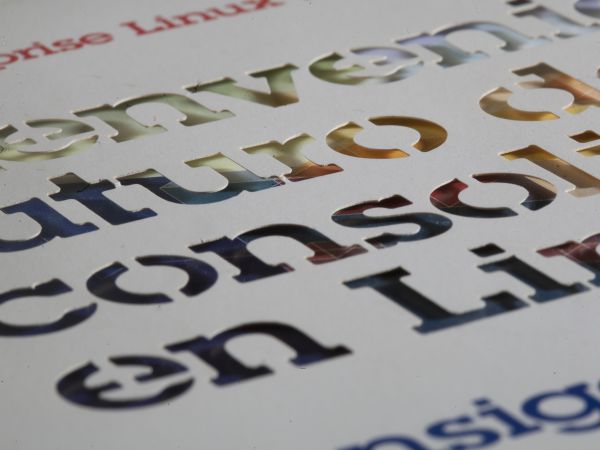
Paper / Label
Paper and cardboard respond very well to the wavelength emitted by CO₂ laser beams. That makes paper digital converting extremely efficient. Being a non-contact process, laser finishing avoids the risk of deformation or distortion of the base material, always ensuring clean cuts and square edges, even with the most intricate designs. For those reasons, cutting and marking are the obvious applications of laser paper processing. Owing to their accuracy, El.En.'s CO₂ laser sources are also used in applications such as laser kiss cutting and laser micro-perforation, especially in the packaging and decorating.
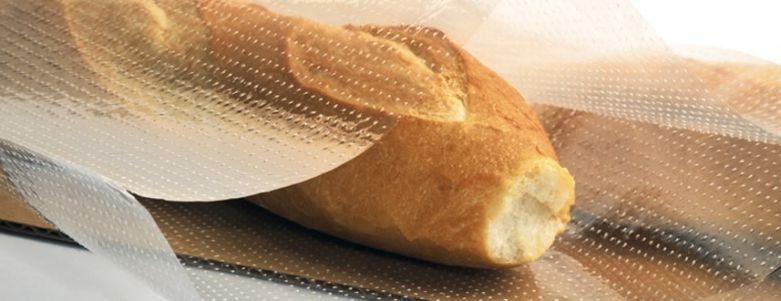
Plastic film
CO₂ laser is a groundbreaking tool for plastic film processing applications. Packaging, coating, digital converting markets will all benefit from a CO₂ laser solution. Being a non-contact process, laser is perfect when you have to deal with a base material as delicate as plastic film. It is a non-contact process: You won't waste or deform the plastic film and you will get the most accurate results achievable today in manufacturing this plastic material. El.En. laser scanning heads make this process possible: They will steer the laser beam emitted by the CO₂ laser source, focusing it precisely where it is needed. By doing so, you will achieve processing such as kiss cutting, micro perforation or welding in applications such as easy opening packaging, micro-perforated films for bread and vegetables.

Rubber & Foam
Rubber and foam are ideal for laser processing. Both natural and synthetic rubber and foam can be effectively cut by CO₂ laser sources. Compared to traditional cutting techniques such as die punch, laser digital finishing ensures a high accuracy and quality of cut, even at very tight tolerances. Forget tool wear, strong fixturing or a bad quality of the cutting edges: Being a non-contact process, laser cutting produces a neat cut even at the highest processing speed. El.En.'s CO₂ laser sources can achieve cutting or marking applications at a great level of detail and within close tolerances.
Processing
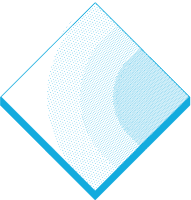
Laser Ablation
Laser ablation is indeed a versatile and precise technique for material removal from solid surfaces using laser energy. Laser ablation is highly precise, allowing for micron-level control over material removal. This precision is particularly advantageous in industries where selective material removal is crucial. The Minimal Heat Affected Zone (HAZ) is also a significat feature: laser ablation is a relatively low-heat process that minimizes the heat-affected zone, reducing the risk of thermal damage to the surrounding material. Materials like metals, polymers, ceramics, and composites can be laser ablated. This versatility makes it suitable for a broad spectrum of applications across different industries. In addition to material removal, laser ablation is widely used for surface cleaning. It can efficiently remove contaminants, oxides, or unwanted layers from surfaces, ensuring a clean substrate for subsequent processes.

Laser Cleaning
Stripping large surfaces is a complex and expensive process. It normally requires the use of chemicals, considerable water and many hours of work. An environmentally friendly and flexible alternative to traditional paint stripping is laser stripping. Laser paint removal involves using laser to remove a layer of paint from the metal substrate on which it is applied. The main advantage is that the beam acts selectively on the paint without touching the metal underneath. The process is ideal for removing paint in a specific area, for example when particular points on the surface, covered with paint in a previous passage, need to be stripped for subsequent functionalization. Of all the paint stripping processes available, laser stripping is the most environmentally friendly: The beam instantly vaporizes the paint without producing any waste or residue. If you are looking for a precise, selective process to perfectly strip irregular or easily damaged surfaces, laser is the solution for you.

Laser Cutting
CO₂ lasers are tools that offer outstanding power and flexibility in laser material cutting applications. Laser cutting is a thermal process in which a laser, assisted by a gas, heats up the material, resulting in the alteration of its state. Laser material cutting advantages include great versatility regarding cutting speed, geometry, precision and accuracy of the cut. Plus, no further processing is required: The part you'll get will be perfectly finished. The typical 10.6 micrometers wavelength of CO₂ laser sources is readily absorbed by a wide range of materials. Metals, ceramic, wood, paper, glass, fabric, composites: a high-power CO₂ laser source will slice them like a knife. Owing to their beam quality and energetic efficiency, El.En's RF CO₂ laser sources are perfect for all those industries where achieving precision cutting is a strategic asset: Automotive, packaging, machine tool, lcd processing and others.

Laser Drilling
Imagine the possibility of making thousands of holes of any caliber in a short time. And without producing any chips and at exactly defined locations. That's exactly what a CO₂ laser source can do. Laser drilling is one of the most diffused laser applications, along with its sibling laser microperforation. Basically, the laser beam striking the surface of a plastic, metal or ceramic material, makes the base material evaporate. The holes resulting from this operation will have neat edges and won't need further processing operations. Furthermore, for drilling applications you can use the same laser sources you would use for cutting operations! El.En.'s laser sources have been engineered to work on metals, ceramic and plastic materials in machine tool, packaging, food, printing and decoration industries.
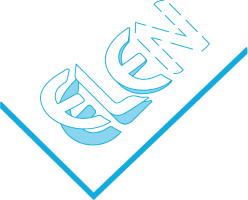
Laser Kiss-Cutting
Laser kiss cutting is a special cutting technique. It is very useful in the paper converting and label production industries: Laser kiss cutting aims at cutting only the top layer of a two-layered sheet instead of cutting through a sheet of paper, as in traditional laser cutting. The production of sticky labels is one of the main fields of application of this processing technique. The advantages of laser kiss cutting are remarkable: Since it is a non-contact process, there won't be any die or blade getting glued to the adhesive layer, avoiding the costs of tool cleaning. Futhermore, laser kiss cutting applications do not require special equipment: A single CO₂ laser source can achieve both laser kiss cut and laser cut through processing. Laser kiss cut is great to be employed in the paper and label industries, where it can be easily integrated into the printing process, but is also perfect for the coating and film industries.

Laser Marking
High powered CO₂ lasers sources have become the standard tool for marking and engraving applications. Laser marking is a thermal process, which works through the ablation of a thin layer of the base material produced by a pulsed laser beam. All this results in a series of shallow pits on the surface that make the mark visible. When the marks made by laser are deeper we refer to laser engraving. Typically, lasers are used to mark bar codes, part codes and identification numbers, company logos and various graphics. Depending on the laser parameters, almost all types of materials can be successfully marked. Compared to traditional techniques laser marking offers high reliability, high speed, real time operability and low operating costs. El.En.'s sealed RF excited CO₂ laser sources have been engineered to achieve top grade results in marking applications: High laser beam quality, wide power ranges, high repetition rate and versatility. Hence, they are the perfect choice for applications in the packaging and electronic industries.
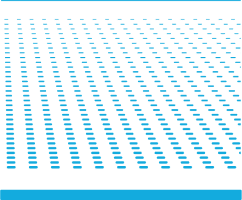
Laser Micro Perforation
Laser microperforation or laser microdrilling is the process of laser drilling micro holes on materials such as plastic films, paper and fabric. It is a subset of laser drilling processing techniques. Compared to mechanical micro perforation, laser offers speed, flexibility, resolution and accuracy. El.En.'s CO₂ laser sources operated in pulsed mode will pulse at a maximum frequency of 100 Khz to get perfectly round holes, with no debris or signs of recast. Owing to those characteristics, El.En.'s CO₂ laser sources are widely used in the food packaging industry, to create containers that will guarantee the quality of the food they store. Other applications are in the automotive industry to drill micro holes in tissues and in the fashion industry to make decorations based on micro-perforation.
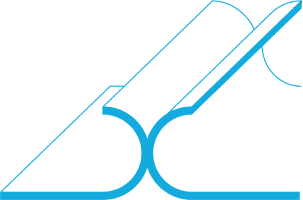
Laser Welding
Like traditional welding processes, laser welding aims to join two parts together. However, a CO₂ laser will do it better, faster and with greater accuracy. CO₂ lasers are succesfully used as a heat source for welding operations. The laser beam heats the edges of two parts to be processed: The heat melts the material, causing the two parts to fuse where they are contiguous. Its main field of applications is laser welding of plastic polymers. This processing technique can be used, for instance, to hermetically seal plastic bags, or to join together parts that are difficult to join with traditional welding tehcniques due to their layout. This makes laser welding excellent in all those applications where extreme precision is required even at micro-scales. But how is it performed? El.En.'s RF CO₂ laser sources coupled with an AZSCAN (for CO₂ laser) laser scan head, have all the key features to do the job. Beam quality and size, power range and components have been engineered to allow you to achieve great polymer welding results in the automotive, lcd and packaging industries.
Specifications
Rated power (W)
150
Effective peak power (W)
700
Power stability (long term)
±5%
Wavelength (μm)
9.3 ± 0.2
Polarization
linear (perpendicular to base)
Beam diameter (1/e² at the exit)
6.0 ± 0.5
Beam divergence (1/e² full angle) (mrad)
3.0 ± 0.3
Maximum pulse frequency (kHz)
100
Pulse width range (μs)
2 ÷ 1000
Maximum duty cycle
50%
Mode quality (M²)
< 1.15
Beam ellipticity
1.15 : 1
Optical pulse rise/fall time (μs)
< 50
Typical gas mix consumption (NL/year)
NA
Operating ambient temperature range (°C)
5 ÷ 35
Storage Temperature range (°C)
5 ÷ 50
Maximum humidity
Non condensing at inlet water temperature
Cooling
Heat load (W)
3000
Coolant temperature (°C)
23 ± 1
Water cooling input pressure (bar)
4
Water cooling flow rate (L/min)
7 ± 0.5
Dimension / Weight
Laser dimensions (LxWxH) (mm)
1200 x 190 x 265
RF power supply dimensions
integrated
Safety shutter
optional
Laser Weight (kg)
37.5
RF power supply Weight (kg)
Electrical Power Requirements
Input voltage (Vᴰᶜ)
48 ± 1
Max current (A)
60
Peak Current (A)
100 for 3 ms max
Rated power (W)
150
Effective peak power (W)
700
Power stability (long term)
±5%
Wavelength (μm)
9.3 ± 0.2
Polarization
linear (perpendicular to base)
Beam diameter (1/e² at the exit)
6.0 ± 0.5
Beam divergence (1/e² full angle) (mrad)
3.0 ± 0.3
Maximum pulse frequency (kHz)
100
Pulse width range (μs)
2 ÷ 1000
Maximum duty cycle
50%
Mode quality (M²)
< 1.15
Beam ellipticity
1.15 : 1
Optical pulse rise/fall time (μs)
< 50
Typical gas mix consumption (NL/year)
NA
Operating ambient temperature range (°C)
5 ÷ 35
Storage Temperature range (°C)
5 ÷ 50
Maximum humidity
Non condensing at inlet water temperature
Laser dimensions (LxWxH) (mm)
1200 x 190 x 265
RF power supply dimensions
integrated
Safety shutter
optional
Laser Weight (kg)
37.5
RF power supply Weight (kg)
Input voltage (Vᴰᶜ)
48 ± 1
Max current (A)
60
Peak Current (A)
100 for 3 ms max
Heat load (W)
3000
Coolant temperature (°C)
23 ± 1
Water cooling input pressure (bar)
4
Water cooling flow rate (L/min)
7 ± 0.5
Rated power (W)
400
Wavelength (μm)
10.2 ± 0.2
Peak Current (A)
≤200 for 3 ms max
Laser dimensions (LxWxH) (mm)
1210 x 320 x 305
Rated power (W)
400
Wavelength (μm)
10.2 ± 0.2
Peak Current (A)
≤200 for 3 ms max
Laser dimensions (LxWxH) (mm)
1210 x 320 x 305
Rated power (W)
300
Wavelength (μm)
10.6 ± 0.4
Peak Current (A)
180 for 3 ms max
Laser dimensions (LxWxH) (mm)
1210 x 320 x 305
Rated power (W)
300
Wavelength (μm)
10.6 ± 0.4
Peak Current (A)
180 for 3 ms max
Laser dimensions (LxWxH) (mm)
1210 x 320 x 305
Rated power (W)
400
Wavelength (μm)
10.2 ± 0.2
Rated power (W)
400
Wavelength (μm)
9.3 ± 0.1
Rated power (W)
400
Wavelength (μm)
10.6 ± 0.4
Low Power RF Sealed Off Pulsed Laser high peak power and wide range of wavelengths
Rated power (W)
300
Wavelength (μm)
10.2 ± 0.2
Low Power RF Sealed Off Pulsed Laser high peak power and wide range of wavelengths
Low Power RF Sealed Off Pulsed Laser high peak power and wide range of wavelengths
Rated power (W)
300
Wavelength (μm)
9.3 ± 0.2
Low Power RF Sealed Off Pulsed Laser high peak power and wide range of wavelengths
Low Power RF Sealed Off Pulsed Laser, high peak power and wide range of wavelengths
Rated power (W)
150
Wavelength (μm)
10.2 ± 0.4
Low Power RF Sealed Off Pulsed Laser, high peak power and wide range of wavelengths
Low Power RF Sealed Off Pulsed Laser high peak power and wide range of wavelengths
Rated power (W)
300
Wavelength (μm)
10.6 ± 0.4
Low Power RF Sealed Off Pulsed Laser high peak power and wide range of wavelengths
Low Power RF Sealed Off Pulsed Laser, high peak power and wide range of wavelengths
Rated power (W)
150
Wavelength (μm)
10.6 ± 0.4
Low Power RF Sealed Off Pulsed Laser, high peak power and wide range of wavelengths
Rated power (W)
80
Wavelength (μm)
10.6 ± 0.4
Our Products are made with the utmost care. Nothing is left to chance: this is why we produce all the components of our devices in house.
Products
Three product series with high levels of customization to meet even the most demanding production requests.
Our Products are made with the utmost care. Nothing is left to chance: this is why we produce all the components of our devices in house.
Products
Three product series with high levels of customization to meet even the most demanding production requests.
